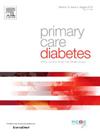Cardiovascular effectiveness of newer glucose-lowering agents, with and without baseline lipid-lowering therapy in type 2 diabetes: A systematic meta-analysis of cardiovascular outcome trials and real-world evidence
IF 2.3
4区 医学
Q3 ENDOCRINOLOGY & METABOLISM
引用次数: 0
Abstract
Background
Whether the cardiovascular treatment benefits of sodium–glucose co-transporter 2 inhibitors (SGLT-2is) and glucagon-like peptide 1 receptor agonists (GLP-1RAs) differ by baseline use of statins/lipid lowering therapy is unclear. This systematic review and meta-analysis investigated whether baseline statin use (users vs non-users) influences the cardiovascular and kidney benefits of SGLT-2is and GLP-1RAs in patients with type 2 diabetes (T2D).
Methods
We identified relevant cardiovascular outcome trials (CVOTs) and observational cohort studies from MEDLINE, Embase, the Cochrane Library, and bibliographic searches up to March 2024. The analysis pooled study-specific hazard ratios (HRs) with 95 % confidence intervals (CIs) for outcomes, categorized by baseline statin use status. We also assessed the interactions between these medications and baseline statin use by calculating and pooling the ratio of HRs (RHRs) within each trial.
Results
Twenty-five articles (13 articles comprising 6 unique CVOTs and 12 articles comprising 9 unique cohort studies) were eligible. In CVOTs of SGLT-2is, the HRs (95 % CIs) of MACE; composite of CVD death or hospitalisation for heart failure; stroke; and kidney events in statin users were 0.90 (0.82–1.00), 0.78 (0.60–1.02), 1.00 (0.77–1.31), and 0.60 (0.53–0.69), respectively. The corresponding estimates were similar in non-statin users. In CVOTs of GLP-1RAs, the HRs (95 % CIs) for MACE in statin and non-statin users were 0.81 (0.73–0.90) and 0.92 (0.77–1.11), respectively. In observational cohort studies, SGLT-2is similarly reduced the risk of several cardiovascular and kidney outcomes in both statin and non-statin users. The estimated RHRs and p-values for interaction indicated that baseline statin use status did not significantly modify the cardio-kidney benefits of SGLT-2is and GLP-1RAs.
Conclusions
Aggregate analyses of intervention and real-world evidence show that SGLT-2is and GLP-1RAs provide comparable cardio-kidney benefits in patients with T2D, regardless of baseline statin use status. PROSPERO Registration: CRD42024498939
新型降糖药物对 2 型糖尿病患者心血管的疗效,包括使用或不使用基线降脂治疗:心血管疗效试验和真实世界证据的系统荟萃分析。
背景:钠-葡萄糖协同转运体 2 抑制剂(SGLT-2is)和胰高血糖素样肽 1 受体激动剂(GLP-1RAs)的心血管治疗效果是否因他汀类药物/降脂疗法的基线使用情况而有所不同,目前尚不清楚。本系统综述和荟萃分析研究了他汀类药物的基线使用(使用与未使用)是否会影响 SGLT-2is 和 GLP-1RAs 对 2 型糖尿病(T2D)患者心血管和肾脏的益处:我们从 MEDLINE、Embase、Cochrane 图书馆和截至 2024 年 3 月的文献检索中确定了相关的心血管结局试验 (CVOT) 和观察性队列研究。分析汇总了按他汀类药物基线使用状况分类的研究特异性危险比(HRs)及95%置信区间(CIs)。我们还通过计算和汇总每项试验中的HRs比值(RHRs),评估了这些药物与他汀类药物基线使用之间的相互作用:符合条件的文章有 25 篇(13 篇包括 6 项独特的 CVOT,12 篇包括 9 项独特的队列研究)。在 SGLT-2is 的 CVOTs 中,他汀类药物使用者的 MACE、心血管疾病死亡或心衰住院复合死亡率、中风和肾脏事件的 HRs(95 % CIs)分别为 0.90 (0.82-1.00)、0.78 (0.60-1.02)、1.00 (0.77-1.31) 和 0.60 (0.53-0.69)。非他汀类药物使用者的相应估计值与之相似。在 GLP-1RA 的 CVOT 研究中,他汀类药物和非他汀类药物使用者的 MACE HRs(95 % CIs)分别为 0.81(0.73-0.90)和 0.92(0.77-1.11)。在观察性队列研究中,SGLT-2is 同样降低了他汀类药物和非他汀类药物使用者发生多种心血管和肾脏疾病的风险。估计的RHRs和交互作用的P值表明,他汀类药物的基线使用状况并不会显著改变SGLT-2is和GLP-1RAs对心血管和肾脏的益处:对干预和真实世界证据的综合分析表明,SGLT-2is 和 GLP-1RAs 可为 T2D 患者带来类似的心肾获益,而与他汀类药物的基线使用情况无关。PROSPERO 注册:CRD42024498939。
本文章由计算机程序翻译,如有差异,请以英文原文为准。
求助全文
约1分钟内获得全文
求助全文
来源期刊

Primary Care Diabetes
ENDOCRINOLOGY & METABOLISM-PRIMARY HEALTH CARE
CiteScore
5.00
自引率
3.40%
发文量
134
审稿时长
47 days
期刊介绍:
The journal publishes original research articles and high quality reviews in the fields of clinical care, diabetes education, nutrition, health services, psychosocial research and epidemiology and other areas as far as is relevant for diabetology in a primary-care setting. The purpose of the journal is to encourage interdisciplinary research and discussion between all those who are involved in primary diabetes care on an international level. The Journal also publishes news and articles concerning the policies and activities of Primary Care Diabetes Europe and reflects the society''s aim of improving the care for people with diabetes mellitus within the primary-care setting.
 求助内容:
求助内容: 应助结果提醒方式:
应助结果提醒方式:


